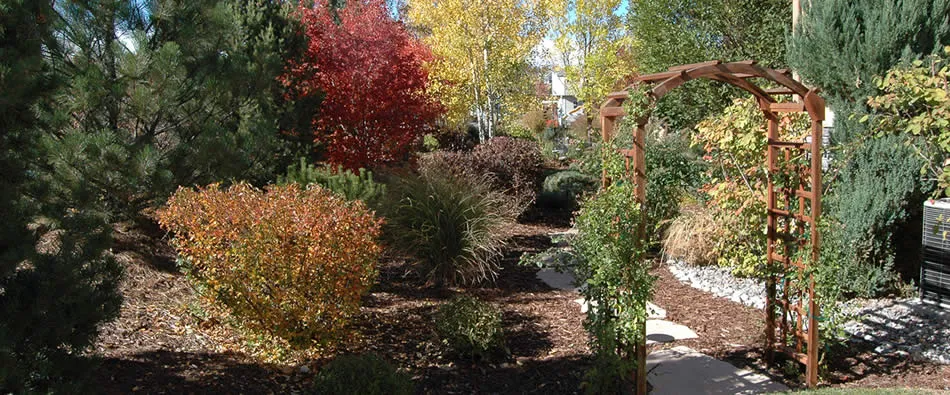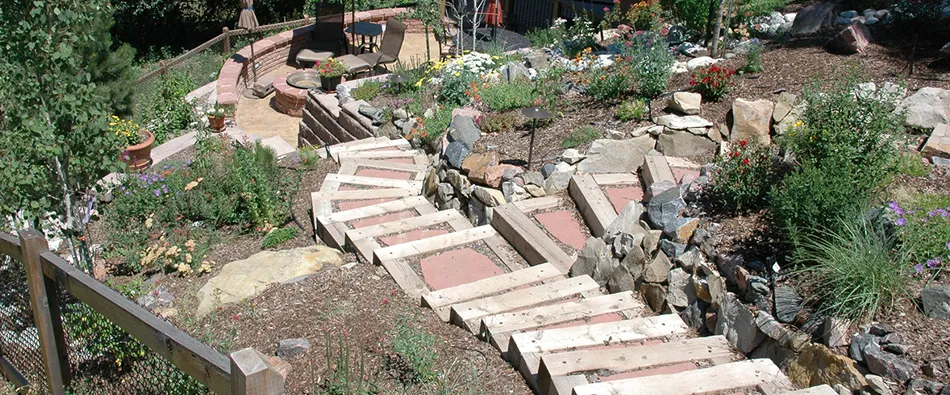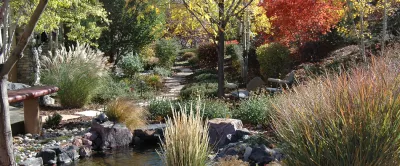Fall leaves are a valuable resource because they keep garden soil productive. By following a few tried and true composting techniques, you can optimize fall-leaf composting.
The minimum size for compost bins is three feet by three feet by three feet. Bins larger than six feet across may restrict oxygen infiltration and slow decomposition.
It's best to mix some nitrogen into the leaves as you add them to the compost Leaves are high in carbon, which makes great compost, but they're comparatively low in nitrogen, and that's what decomposing bacteria feed on. You can add nitrogen in the form of fertilizer or fresh green organic matter. Just add one-quarter to one-half cup of standard lawn fertilizer per bushel, or add one part dry leaves with two parts fresh grass clippings or similar green garden debris. If you use a fertilizer, be sure to select one that doesn't contain any weed killers.
As you add leaves to the compost, moisten them until they're the consistency of a wet sponge. Check the compost regularly and water to maintain adequate moisture content. Moisture is slow to soak through a leaf pile and is essential for decomposition. Be careful not to over-water, because you don't want the leaves to be soggy.
Whole leaves are better for compost than leaves that are shredded or mulched with a lawn mower. Finely chopped leaves may pack down excessively in the compost bin, restricting oxygen infiltration necessary for decomposition.
By following these simple guidelines, you can produce fall-leaf compost by late spring. An unattended a pile of leaves may take two to three years to decompose.
The breakdown of organic yard wastes is a biological process dependent on microorganism activity. Like most living things, these microbes require favorable temperatures, moisture, oxygen and nutrients.
Temperature. Plant-digesting microbes operate in a temperature range of 70 to 140 degrees, but breakdown occurs slowly at the lower temperatures. Well-managed compost rapidly breaks down in summer when compost temperatures quickly reach 120 to 130 degrees. If summer heat plus the heat produced by active microorganisms causes the temperature of the plant mass to exceed 160 degrees, the microbes will die. Colorado winter temperatures cool compost and greatly extend the time required to produce a finished product.
Moisture and oxygen. Moisture and oxygen are essential to microbial activity. In a region of limited rainfall such as Colorado, add moisture regularly to maintain composting. If parts of the composting material dry out, many microorganisms in the dry areas die. Even when moisture is added, the microbes that remain require time to multiply and resume plant digestion. The net result is slower composting. However, excess moisture displaces air and slows breakdown. Surplus water creates low oxygen conditions where certain microbes multiply and produce foul odors. The best description of the proper moisture level is moist or damp but not soggy. The entire mass of plant wastes should be moistened uniformly to the point where only a few drops of water can be squeezed from a fistful of plant material.
The size of plant particles that go into the compost also affects aeration. Large particles allow a lot of air to circulate around the plant chunks, but breakdown is slow because microbes can act only on the outside, not on the inside of the large chunks. Particles chopped into smaller chunks increase the surface area for microbes to operate. Particles chopped too small will compact and restrict air flow. Moderate-sized plant pieces of 1/2 to 1 1/2 inches are the best size to use and can be produced by hand or machine shredding. Chop woody materials into a smaller size. Leave soft plant parts in larger pieces for effective composting. Fluff or turn the material with a pitchfork or aerator tool at regular intervals to provide additional aeration and distribute microbes throughout the compost.
Nutrients. The microbes that break down plants use the plants for food. Nitrogen is the most important food nutrient, because a nitrogen shortage drastically slows the composting process. Woody and dried plant materials tend to contain little nitrogen in comparison to the total mass of the material. Green plant material, however, contains a high percentage of nitrogen. A mix of equal parts by volume of green and dry plant material generally gives the best nitrogen balance. Add a plant fertilizer high in nitrogen when green materials are scarce.
Compost as Soil Amendment and Mulch
Mix soil amendments well with the soil to separate clay particles or hold water in sand. For this reason, prepare soil before planting lawns or trees. Areas planted every year, such as vegetable or annual flower gardens, can accept frequent applications of compost. Indoor potted plants and outdoor container plants benefit from compost as an ingredient in potting soils. As with peat-based mixes, potting soils that use compost require a material such as perlite to avoid waterlogging. Some weed seeds can survive composting, but weed plants can be easily pulled.
Mulches suppress garden weeds, cool soil, conserve moisture and reduce soil erosion. To mulch, apply a 4- to 5-inch layer of organic material on top of the soil instead of mixing it into the soil as with amendments.
Compost can be used as a mulch. It has the disadvantage of being light and easily blown away in the wind, unlike bark or rock mulch that stays in place. Like any organic mulch, compost supports weed growth, which can cause problems if weed seeds blow into the area. While mulches eventually become incorporated into the soil, amending the soil directly with compost is a better solution where soil conditions limit plant growth.
From the Colorado University Extension Services
-------------------------------------------------------------------------------------------------
Denver, Colorado






